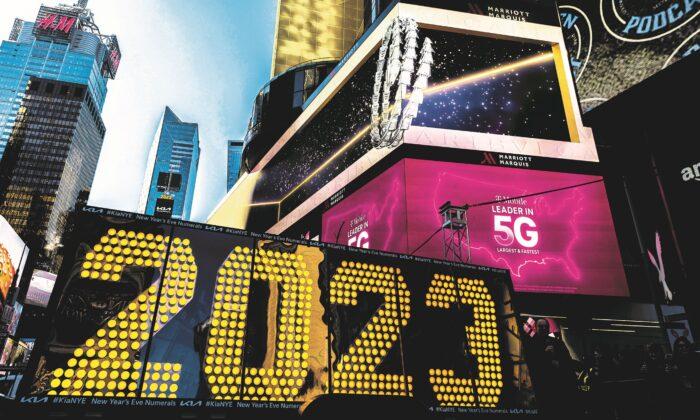A common refrain from audience members who have seen Shen Yun Performing Arts is that the show leaves them feeling uplifted or inspired. Some even say they feel exhilarated or energized.
This phenomenon could have a lot to do with the music of the Shen Yun Orchestra.
What makes the Shen Yun orchestra unique in the music world is its blend of East and West—it is the only orchestra in the world that includes both classical Western and Chinese instruments as its permanent members.
The Shen Yun orchestra’s all-original works draw upon the rich culture of China’s 5,000 years, melding the distinct spirit of Chinese music with the precision and power of a Western symphony orchestra.
Alongside Western symphonic mainstays like brass, woodwinds, strings, and percussion, Shen Yun incorporates ancient Chinese instruments such as the pipa (Chinese lute), the dizi (bamboo flute), the pengling (handbells), and the erhu, a two-stringed instrument played with a bow.
Known for its mournful, haunting sound, the erhu also gets its own solo spot in the show—a performance that never fails to delight audiences.
“People always find it moving because it is a basic characteristic of humanity to be able to connect with this kind of music,” said conductor Keng-Wei Kuo in a previous interview with Epoch Times.
Introduced to China in the 10th century, the erhu is one of the few instruments in existence that has been preserved in its original form for the most part.
“It’s one of the instruments that is closest to original music heard by man,” said Kuo.
New York-based Shen Yun Performing Arts, accompanied by the orchestra, first started touring internationally in 2006, showcasing China’s traditional culture through music and dance.
Last year, the producers decided it was time the orchestra shone on its own stage, and it made its debut at Carnegie Hall under the name of the Shen Yun Symphony Orchestra.
It played there again this year and at several other venues across the U.S., with a repertoire that included original Shen Yun compositions as well as Western masterpieces by the likes of Tchaikovsky and Beethoven.
Kuo was one of four conductors who toured with the orchestra, which also features bel canto singers.
Ancient Influences
Throughout much of China’s long history, society was influenced by Buddhism, which advocated peace and harmony, as well as Confucianism, which espoused living by the five cardinal virtues of benevolence, justice, propriety, wisdom, and integrity.
“Chinese music is imbued with characteristics from that time period,” said Kuo. “It is filled with this collective aim for sustaining peace in society. Its music is performed for the good of others.”
The Shen Yun Orchestra has endeavoured to carry on this tradition.
“I’ve gotten audience feedback that they felt an inner peace after listening to our music. People find it uplifting,” Kuo said.
Such was the case for fashion designer Alexandre Dorriz, who attended a performance by the Shen Yun Symphony Orchestra in Costa Mesa, California, in October.
“Coming from a visual background, music is my muse. I listen to music to be inspired, and it was inspiring,” Dorriz said. “It’s uplifting. It puts you into flow, puts you into a trance.”
“The spirit of the music is just up in the air,” said Nové Deypalan, a local conductor who attended the same performance.
“Don’t know what it is, but it’s just incredible. It’s an awesome, awesome feeling.”
Balance of Sounds
Such beneficial effects can be explained through Chinese medicine, according to Jingduan Yang, a fourth-generation doctor of traditional Chinese medicine based in New York City who saw Shen Yun perform at the Lincoln Center.
He explained that Chinese medicine has identified five major sounds that have a specific impact on the energy of five corresponding organ systems: the liver, heart, spleen, lungs, and kidneys.
“When the five sounds are composed in a smooth, balanced fashion they positively affect the five organ systems, and therefore help balance the energy of the human body and improve physical and mental functions,” said Yang.
“The composers of the music in Shen Yun have worked very hard to follow Chinese classical music, which always emphasizes the balance of the sounds. It generates the energy of soothing, moving, warming, and calming.”
Yang said there is also another aspect of the production that can have a positive effect on the emotions—its broad use of colour in the handmade costumes and hand-painted backdrops.
He described the colours of the costumes as “strikingly balanced,” while the use of colour in the backdrops “comforts and nurtures one’s whole being.”
“If sound and colour affect the energy of human organ systems, it will affect human emotions,” he said.
Shen Yun Performing Arts will begin the Canadian leg of its international tour on Dec. 27. For more information visit: shenyun.com






